This protein packed, easy tofu soup is for real Korean foodies who want to experience real Korean flavor, without any animal products.
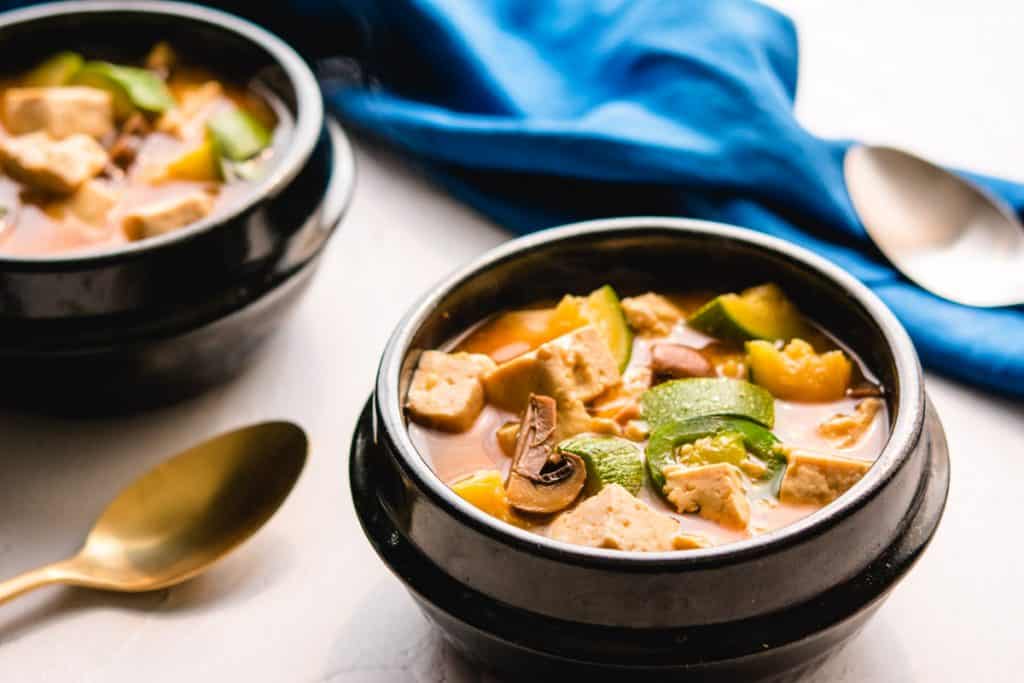
This richly flavored stew seasoned with Korean soybean paste is meant to be served with rice and eaten with lots of side dishes such as sesame spinach, 5 minute bean sprouts, and cucumber kimchi.
What is doenjiang jigae?
While many know the beloved creamy tofu soup known as soondubu jigae, this doenjiang jigae is another tofu soup made with the fermented Korean soybean paste, called doenjiang.
Pronouned “dwen-jahng”, it hasn’t quite gained the mainstream popularity that Korean gochujang has and for that reason, this soup may still be shrouded in mystery for non Korean foodie elite.
At its heart, it is a simple homestyle stew made with tofu and additional vegetables.
Every Korean family makes it and has their own version that may traditionally include anchovies, beef, or clams.
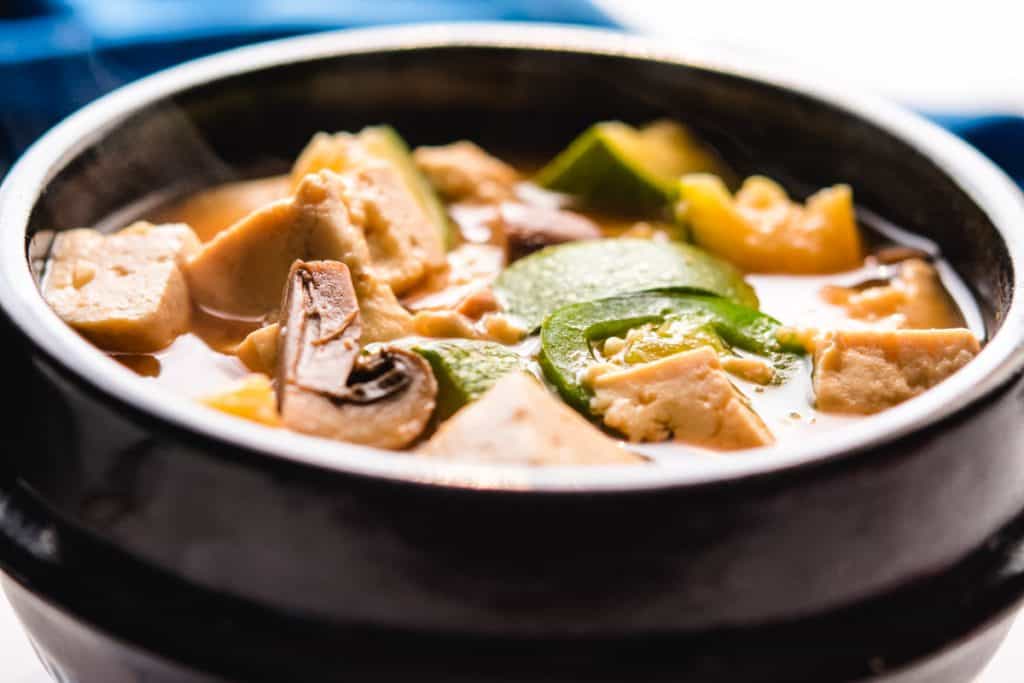
Dojenjang Jigae vs. Doenjang Guk
You may see the soybean paste featured in jigae, the Korean word for stew, or guk, the Korean word for soup,
The doenjiang jigae version usually always has tofu while the guk version usually contains just vegetables such as soybean sprouts, spinach, mushrooms and more water.
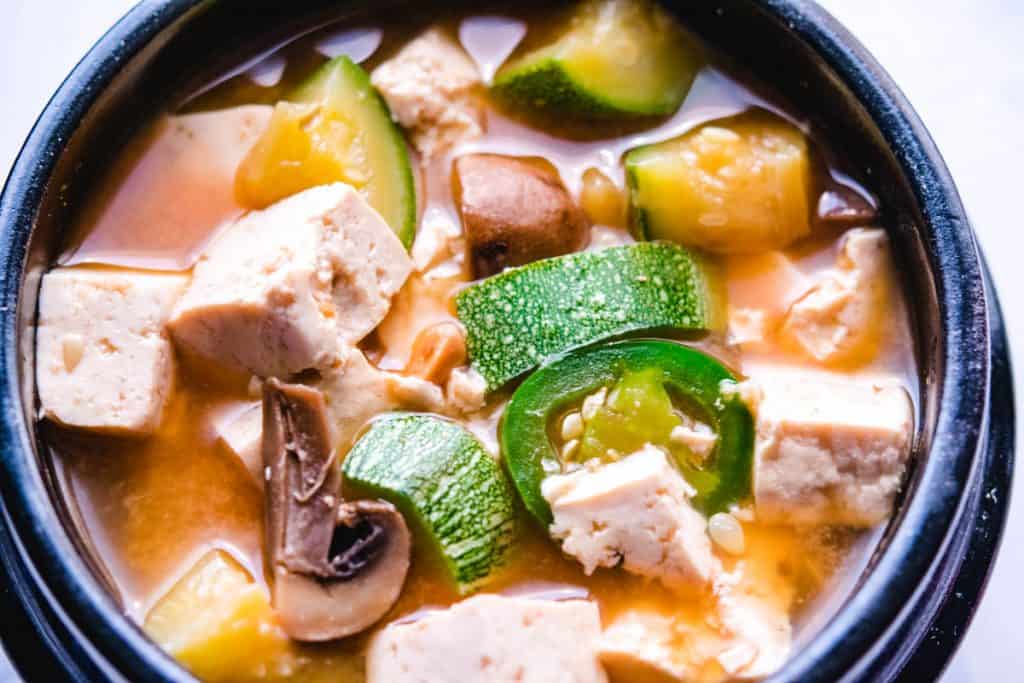
Doenjiang FAQ
Doenjiang, or Korean soybean paste, is akin to Japanese miso but has a saltier, stronger, and more pronounced sour flavor. Miso has more sweet, mild flavors.
You could use red Japanese miso, rather than the yellow or white miso. The red miso is the strongest and saltiest in flavor, though more delicate and less sour than doenjiang.
The plastic tub is shelf stable. Once opened, it should be refrigerated. It will last for years but does dry out. It should be consumed within a year.
How to make Doenjiang jigae vegan
Traditional doenjang jigae generally begins with an anchovy stock. It may also add clams or beef.
Fortunately, we don’t have to mess around with any of that.
While you could use a vegetable stock or kombu broth instead of water, the doenjiang has enough umami flavor to hold its own.
It also makes the dump and go method much easier.
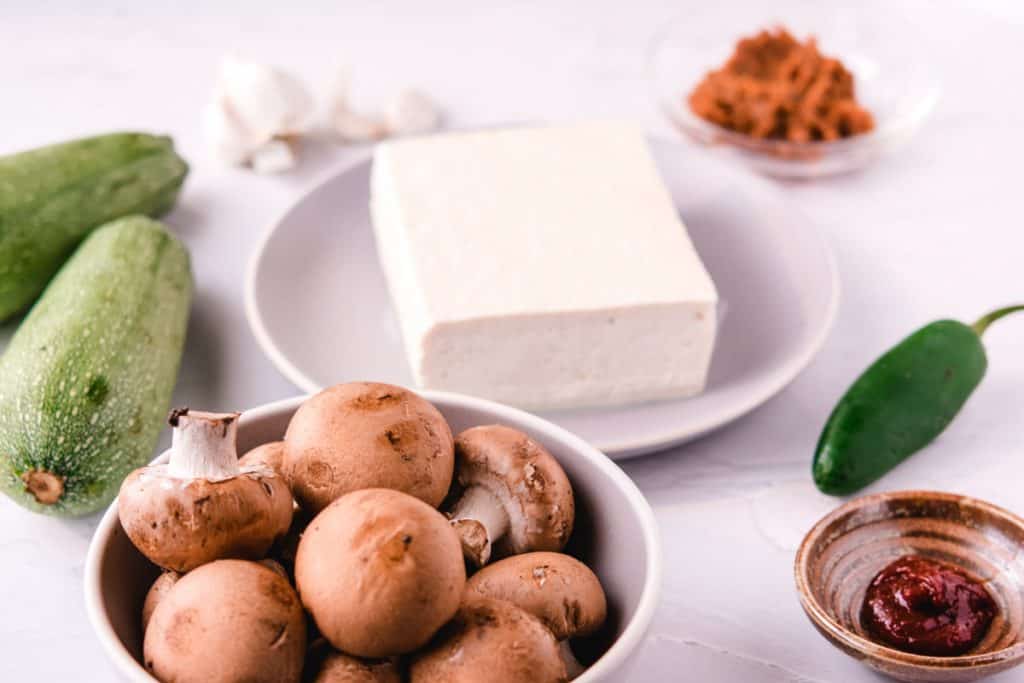
The dump & go method
While controversial, the dump and go method is most certainly convenient.
Since home cooking should not be hard or make you feel bad, this method should suit your tastebuds just fine.
Basically, put everything in a pot and boil.
While some Korean moms will saute their veggies first, those who can’t be bothered are free to dump and go.
Optional additions
This stew also works really well with any the following additions or substitutions for the vegetables:
- cauliflower florets
- spinach, baby or regular
- cubed, peeled potatoes
- large diced onion
The only requirement is that doenjiang jigae has tofu. Not silken tofu like soondubu but a medium or firm tofu.
Step by step process
Time needed: 25 minutes
- Chop zucchini
- Quarter mushrooms
- Cube tofu
- Add everything to pot
Including the soybean paste, chili paste, and 3 c of water. You don’t have to add the gochujang, or Korean chili paste, but it does give the stew a nice spice, reddish tinge, and flavor similar to how this stew would be served in restaurants.
- Bring to a boil and simmer for about 10 minute until vegetables are cooked and tofu is heated through.
Skim any vegetable scum that may bubble up to the top. While the pot cooks, you can smash your garlic and slice your jalapeno if using.
- Add garlic and jalapeno
Simmer for another 1-2 minutes, just enough for them to release their flavors.
- Serve hot at the table.
Or make ahead and store for up to 3 days in the fridge.
- Or transfer to individual bowls for serving.
These are traditional Korean black stoneware pots that the soup would normally used to cook and serve the dish. However, they are only large enough for 1-2 servings.
Helpful Tips
- This stew is meant to be eaten with rice. Reduce the amount of soybean paste if you do not want it too salty.
- In place of or in addition to the zucchini and mushrooms, you could add cauliflower florets, spinach, and/or cubed, peeled potatoes.
- You don’t have to add the gochujang chili paste. It makes it taste more restaurant style rather than homestyle.
- Some people like to saute the vegetables with oil first in the pot, before adding the remaining ingredients. This additional step does develop another layer of flavor but also take a little bit longer.
- You could add the garlic and jalapeno at the beginning too. I just add it at the end of cooking to keep the garlicky and spicy flavors nice and peppy.
- Store up to 3 days in the fridge. Leftovers are just as good as the original!
Vegan Doenjiang Jigae (Korean Soybean Paste Stew)
Ingredients
- 1 carton tofu, medium firm or firm 14 oz
- 2 ea zucchini 2 lb
- 1 carton button mushrooms 8 oz
- 3 c water
- 4 Tb doenjiang, Korean soybean paste or dark miso paste
- 1 Tb gochujang, Korean chili paste for that restaurant flavor, see Note 3
- 2 cloves garlic minced
Optional
- 1/2 ea jalapeno, sliced if you like it spicy!
Instructions
- Chop zucchini, tofu, and mushrooms in whatever shapes you would like to eat them in. Sliced or cubed, it doesn't really matter. In the pictures, I stuck with cubes of tofu and zucchini and quartered the mushrooms.
- Add ingredients to a pot large enough to hold all the vegetables and tofu. Add water, Korean soybean paste and chili paste.
- Bring to a boil, lower heat, then simmer for about 7-10 minutes until the goodness is heated through. It will cook more quickly covered, but that is up to you. If you see bubbles of vegetable scum floating to the top, scoop and throw them away.
- Add the garlic and jalapeno if using. Simmer another 1-2 minutes.
- Bring pot to the table, and serve hot with brown rice.
Notes
- This stew is meant to be eaten with rice. Reduce the amount of soybean paste if you do not want it too salty.
- In place of or in addition to the zucchini and mushrooms, you could add cauliflower florets, spinach, and/or cubed, peeled potatoes.
- You don’t have to add the gochujang chili paste. It makes it taste more restaurant style rather than homestyle.
- Some people like to saute the vegetables with oil first in the pot, before adding the remaining ingredients. This additional step does develop another layer of flavor but also take a little bit longer.
- You could add the garlic and jalapeno at the beginning too. I just add it at the end of cooking to keep the garlicky and spicy flavors nice and peppy.
- Store up to 3 days in the fridge. Leftovers are just as good as the original!



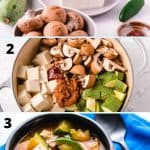
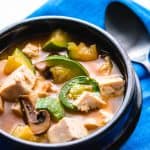
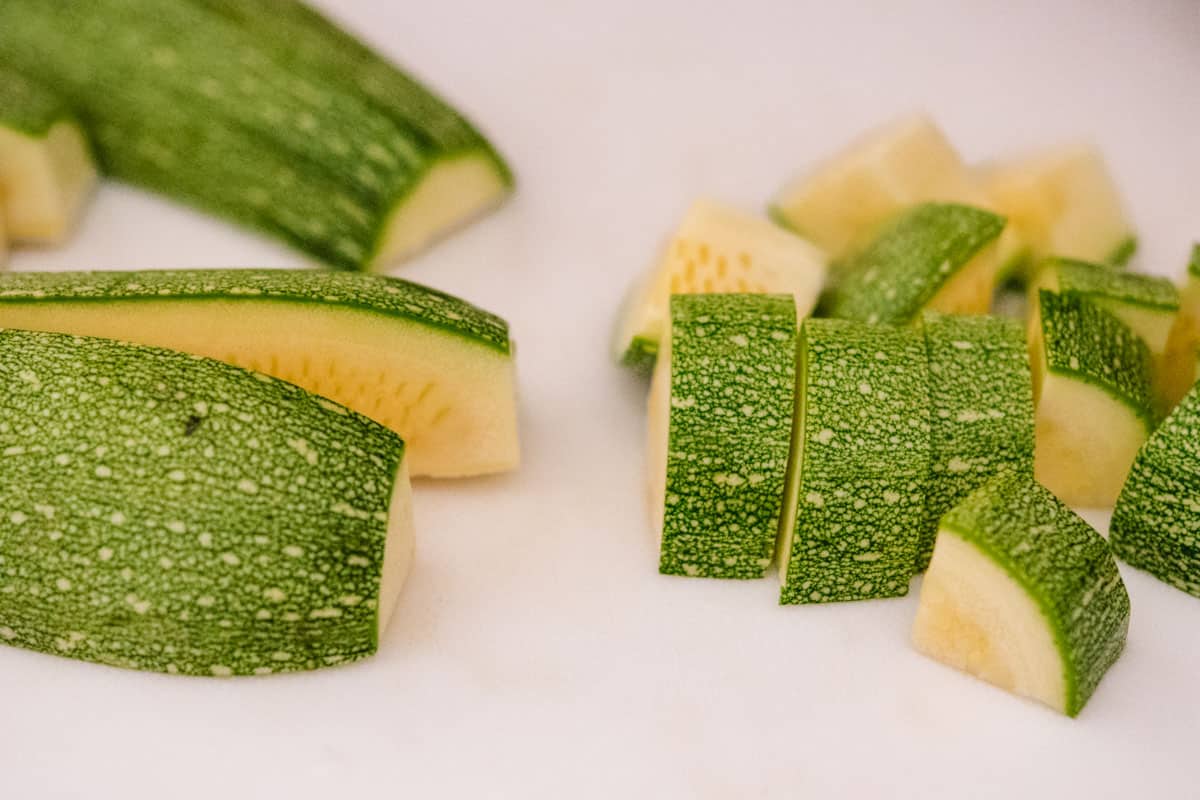
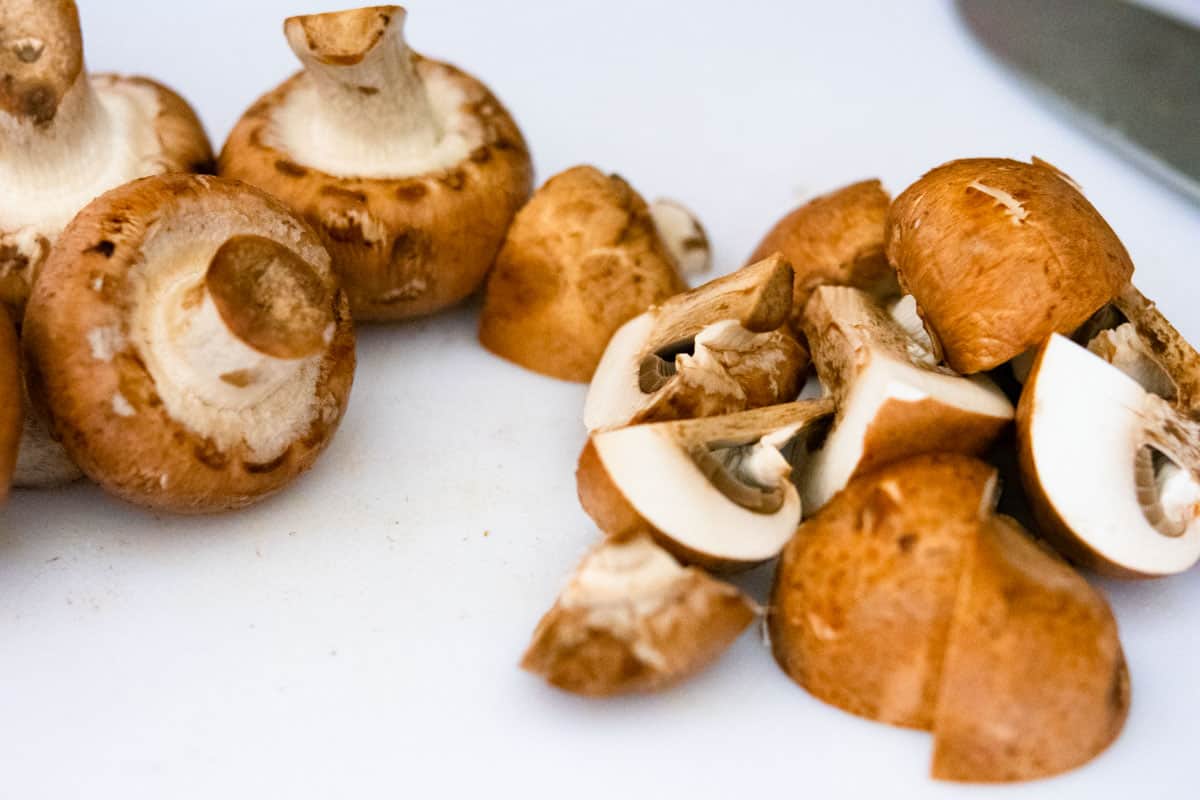
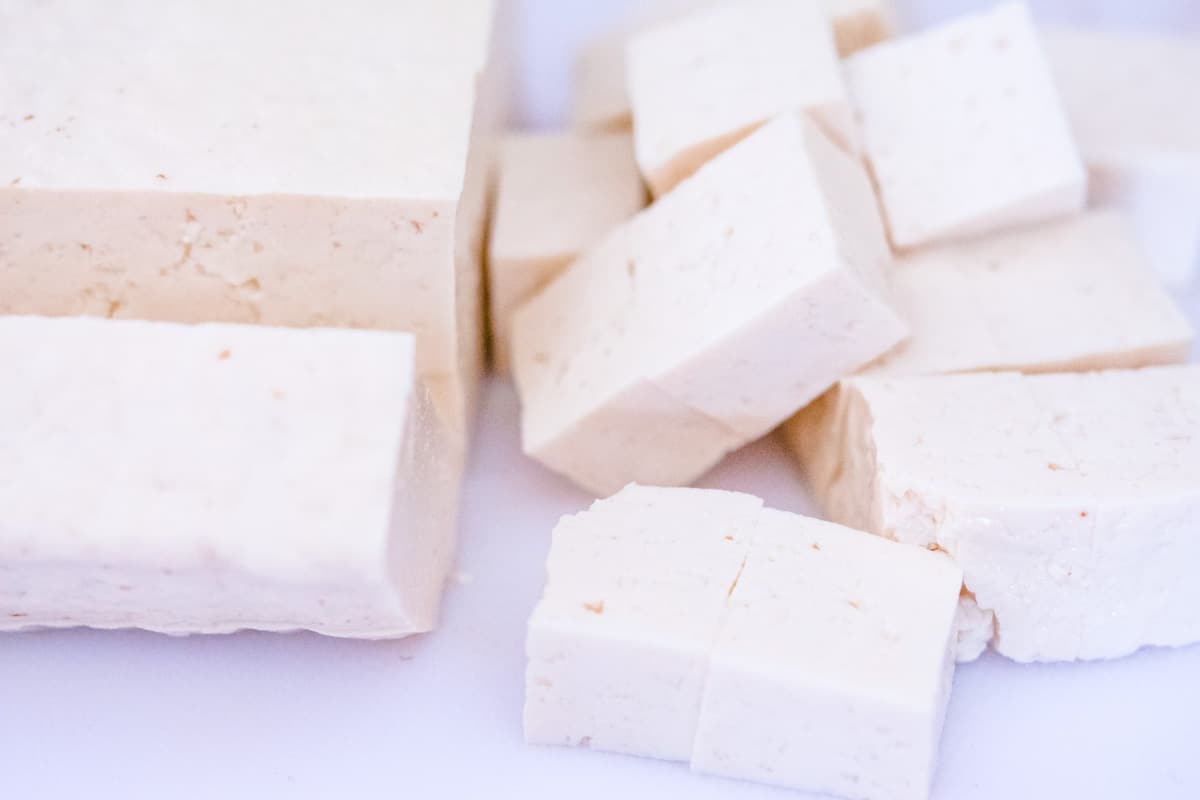
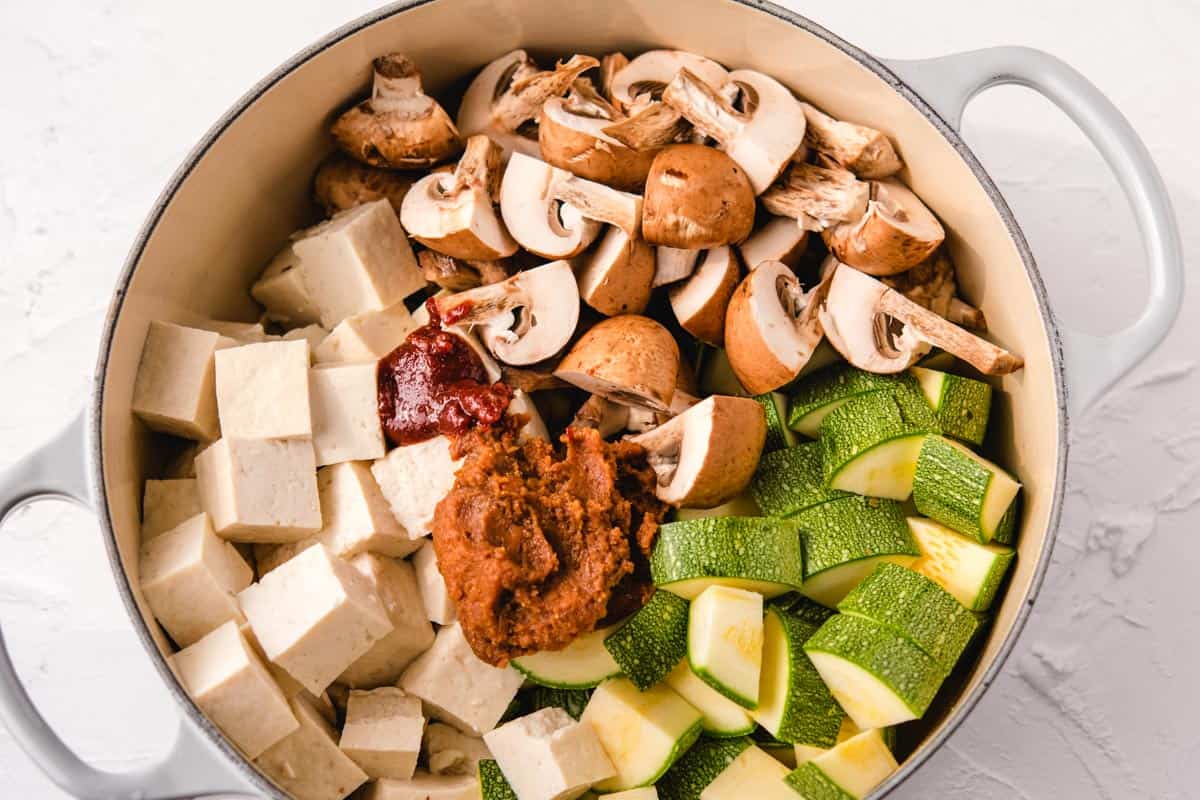
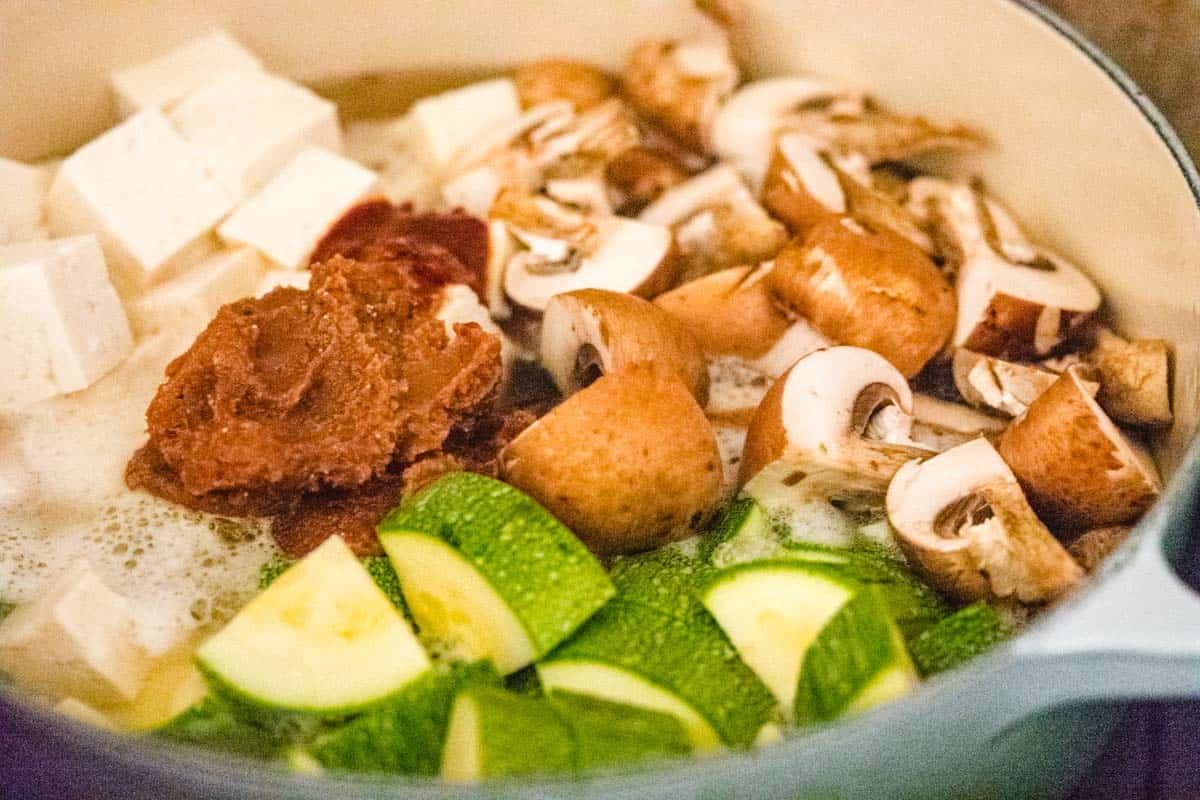
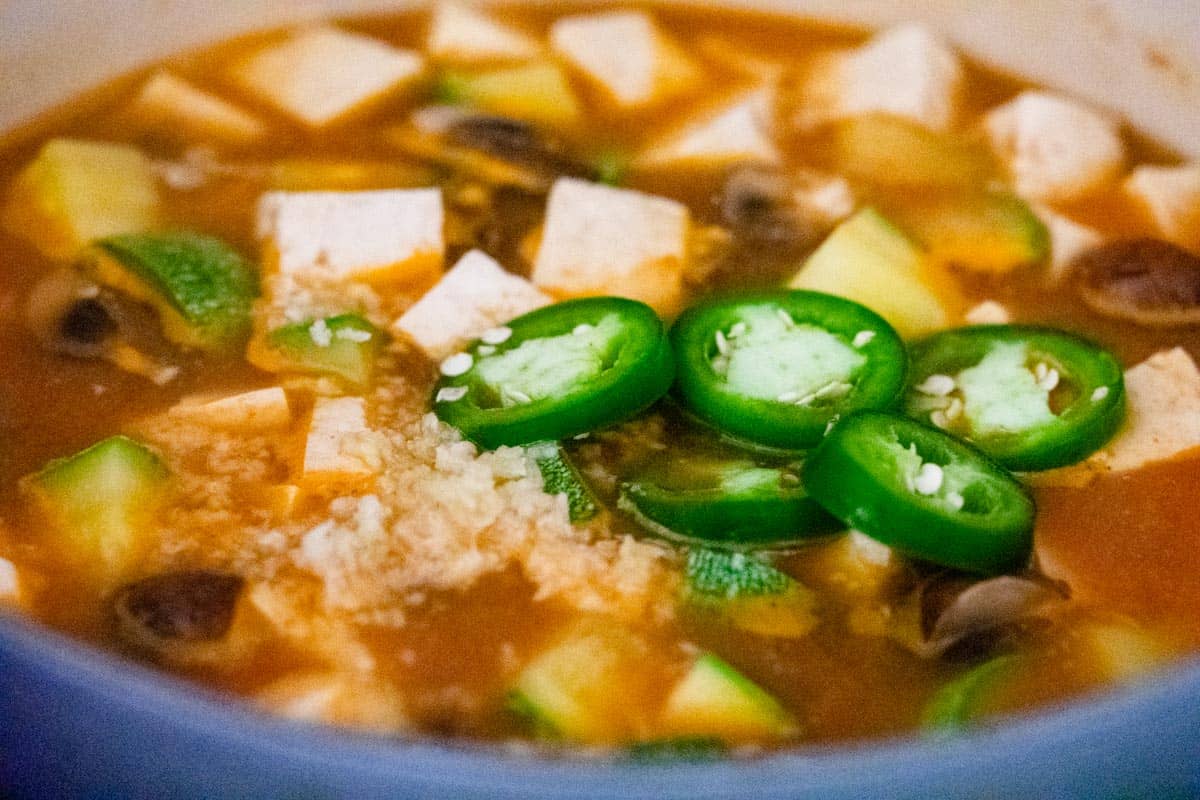
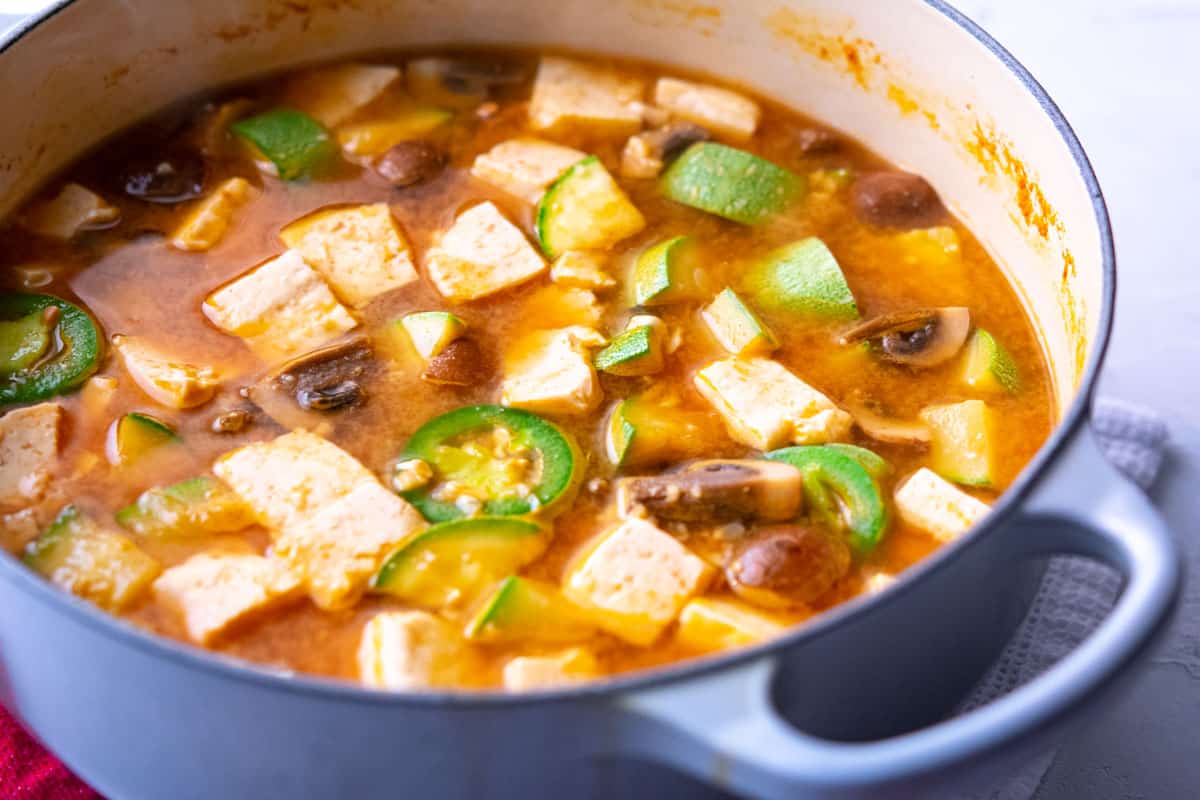
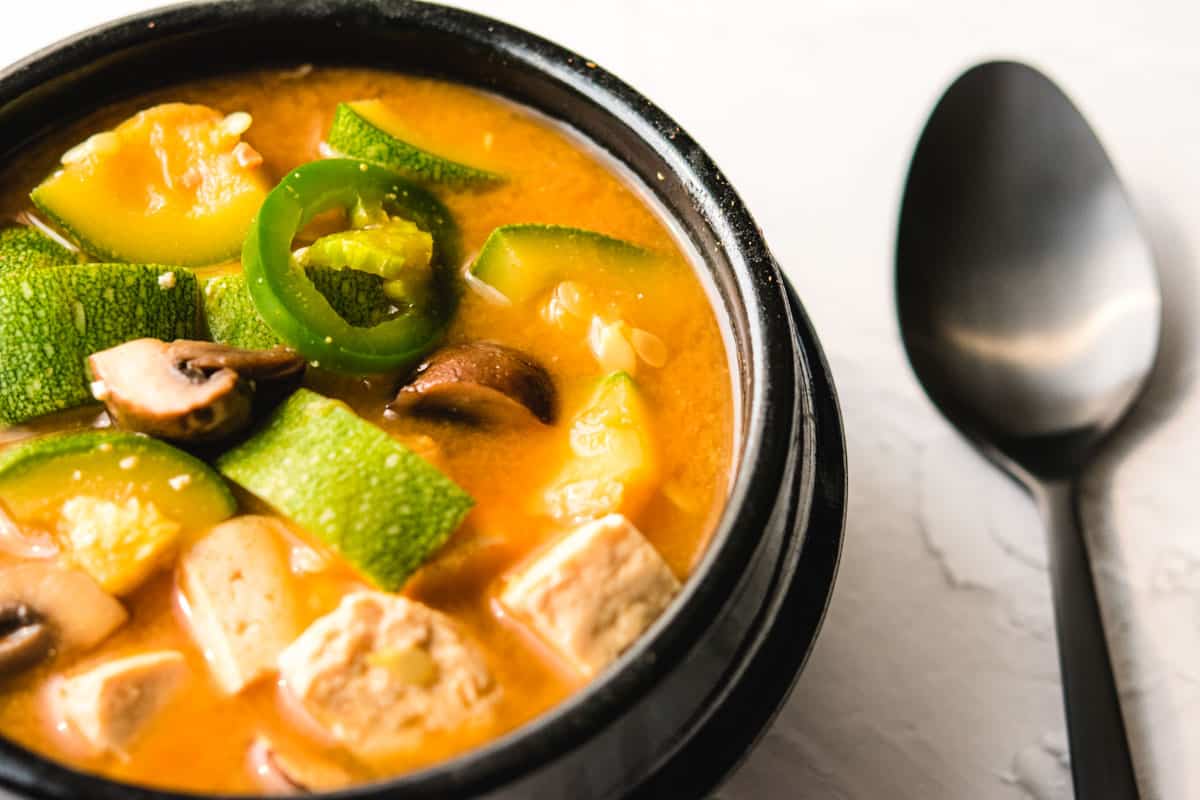
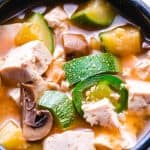

Kay
This is absolutely delicious! Have made it twice already in the past month and it’s super comforting and so morish that I went back to get a second bowl each time. 🙂 Thank you for this recipe, I already know it’ll become a staple for me!
[email protected]
Thank you so much Kay! So proud of you for trying this recipe, which is not so commonly known outside of Korean home kitchens. Really appreciate your kind feedback. Have a wonderful day! 🙂
R Jones
Awesome!!! I am so glad I decided to try this. The only things I did different was 1) add some potatoes, which went in first while I brought the water and pastes to a boil and 2) add some vegan dashi bags while the potatoes were boiling. Such a hearty, tasty dish. Served with rice. 🙂
Michael Currie
I have been exploring Korean cuisine, and being a big fan of miso, decided to give doenjang a try. Good move…it’s wonderful stuff. In addition to my usual recipes in which I’ve subbed doenjang for the miso, I went looking for uses in traditional Korean dishes. This was the first – and best – that I tried.
Quite honestly, I am not a big tofu lover, at least with milder flavors. This recipe emphasizes the virtues of tofu without the sort of ‘cardboard’ flavor that I dislike. In other words, this is a near perfect vegan dish – rich, extremely flavorful, and tremendously satisfying. I added a few more vegetables, including the suggested cauliflower and, most interestingly, some shredded Napa cabbage literally right before serving. I have also tried it with and without the gochujang, and prefer it in, along with the jalapeños. No surprise there (I manufacture hot sauce). I served with jasmine rice laced with toasted sesame seeds. Truly outstanding.
Thanks so much for providing this recipe. We’ll be enjoying it on a regular basis.
[email protected]
Hi Michael! Wow, thank you so much for your very kind comments and for trying out this recipe so thoroughly! Doesn’t it taste so good with the cauliflower? I love that addition too. I was initially unsure about sharing a recipe that’s not really considered popular in Korean cuisine, and I remember being embarrassed eating this as a kid because it was so foreign to others. Therefore, it makes me beyond delighted to hear how much you enjoyed it. Happy cooking, and cheers to many more bottles of your hot sauce! 🙂
CO_BRO
Great recipe… my sister in law is Korean and I have been exploring the cuisine more as I try to eat less meat… though Koreans eat meat quite a lot, there are still a lot of interesting flavor profiles like this soup for a westerner to try out.
I started with plain water and added kombu seaweed and simmered for 5 minutes to add a layer of flavor. Dashi powder (vegan or otherwise) would add even more. I also added 1 chopped potato which was a highlight for me and I would not skip.
I didn’t follow the quantities in the recipe, but for what is listed there, I think 3 cups of water is way too low. Despite my potato addition, I used less solids than called for (1/2 tofu pack instead of a full pack per the recipe, and less than 1 zucchini vs 2lbs in the recipe) and found that 5-6 cups of water along with slightly more doenjang worked for me. So, if you’re a recipe-follower, I’d increase the water quantity and adjust the seasoning accordingly if you plan to use that amount of veggies/tofu. Thanks for the recipe!
[email protected]
Wow that is so awesome to hear! Thank you so much for your kind comments and trying to the recipe. So happy to hear about your explorations! I love the potato addition too. 🙂